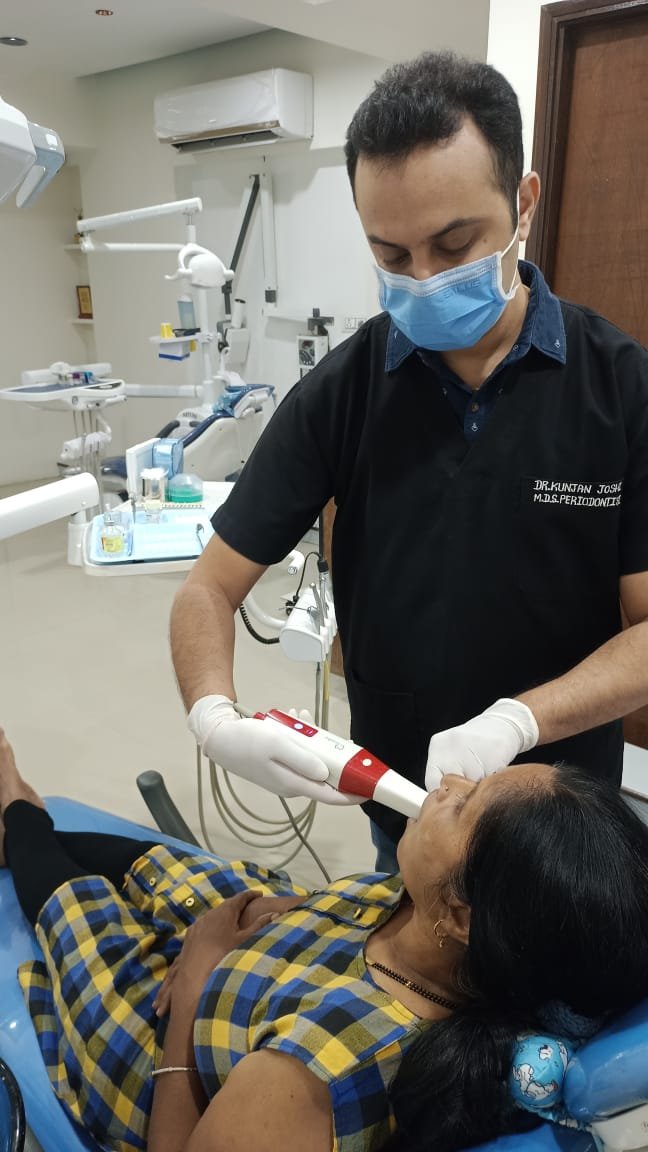- Call Today +91 77408 59500
- Open Hour 10am–1pm, 5–8:30pm

An intraoral scanner is a handheld device used to directly create digital impression data of the oral cavity
An intraoral scanner is an innovative equipment for taking digital impressions of a patient's mouth. For a more precise scan, this state-of-the-art tool employs a laser source to highlight the teeth and gums. It takes millions of photos using imaging sensors and processes them using scanning software. The end product is a detailed 3D model of your teeth and gums.
The usage of digital intraoral scanners on computers has spread throughout modern dental practices. They've evolved into efficient tools, offering an option for labor-intensive, analog impressions and production processes. These scanners are crucial to the CAD/CAM processes that improve efficiency and the patient experience during dental restorations.
An intraoral scanner consists mainly of a hand-held camera wand, a personal computer, and specialized imaging software. The handheld wand is a compact and stylish gadget that is linked to a computer running specialized software to process the digital data acquired by the camera. The smaller the scanning wand, the more exact and accurate the data it can collect from the depths of the mouth cavity. This method reduces the potential for triggering a gag reflex, making the procedure more tolerable for the patient.
During the scanning operation, the dentist softly puts the camera wand into the patient's mouth and moves it over the teeth's surface. The wand detects the dimensions of each tooth mechanically. Complete scanning takes only a couple of minutes with this method. On the screen, live feeds are displayed, and you can zoom in to examine minute details. Next, dental labs receive the information and use it to make any custom dental appliances that may be required. Dentists can properly diagnose and treat more patients thanks to the rapid feedback and speed of the entire process.
For the Clear Aligners treatment, you need to follow the instructions from the orthodontist. You may have to switch the Clear Aligners and wear these for 22 hours daily.
Dental intraoral scanners have several uses; however, the following are among the most important:
Intraoral scanners provide various benefits over conventional impression molds:
© 2025 The Smile Center. All rights reserved.
